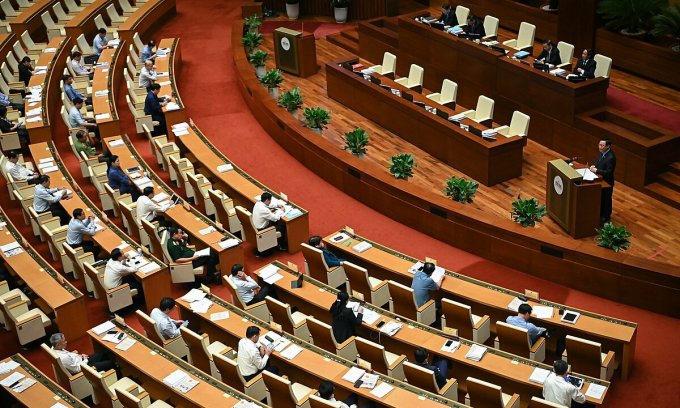Can production forest land be planted with fruit trees in Vietnam?

Today, in production forests in Vietnam, there are many situations where people voluntarily intercrop fruit trees such as oranges, tangerines, pomelos, etc. into the production forests that the State has assigned. This has caused controversy among the people about whether fruit trees can be planted on production forest land or not. So about the matter “Can production forest land be planted with fruit trees in Vietnam?” Let’s find out with LSX in the article below.
Legal grounds
- Civil Code 2015
- Land Law 2013
- Law on Forestry 2017
- Decree 156/2018/ND-CP
- Decree No. 91/2019/ND-CP
What is production forest land?
Production forest land is land used mainly for agricultural, forestry or aquaculture production purposes. According to the provisions of the Law, production forest land belongs to the type of agricultural land specified at Point c, Clause 1, Article 10 of the 2013 Land Law. Production forest land belongs to the group of agricultural land, so it is necessary to comply with regulations on use use of this soil.
Production forests are classified according to 2 objects:
+ Production forests are natural forests, including: Natural forests and forests restored by zoning and promoting natural regeneration.
+ Production forests being planted forests include: Forests planted with state budget capital, forests planted with self-invested forest owners’ equity. Regulations on the use of production forest land
Regulations on allocation of production forest land in Vietnam
According to the provisions of Article 135 of the Land Law 2013, the production forest land is as follows:
– The State allocates natural production forest land to forest management organizations for forest management, protection and development.
– The State allocates or leases land from planted production forests according to the following regulations:
+ Allocate land to households and individuals directly engaged in agricultural production according to the quotas specified at Point b, Clause 3, Article 129 of this Law to use for forestry production purposes. For areas of production forest land used by households or individuals in excess of the quota, they must be converted to land lease;
+ Leasing land to economic organizations, households, individuals, overseas Vietnamese, foreign-invested enterprises to implement investment projects on afforestation;
+ Economic organizations, households, individuals, overseas Vietnamese, and foreign-invested enterprises that are allocated or leased land by the State for production forests according to the provisions of Points a and b of this Clause, the unforested land may be used for afforestation or perennial crops.
Economic organizations, overseas Vietnamese, foreign-invested enterprises using production forest land may combine landscape business, eco-tourism – environment under the forest canopy.
– Land for production forests concentrated in places far from residential areas that cannot be directly assigned to households or individuals shall be assigned by the State to organizations to protect and develop forests in combination with agricultural and forestry production. industry and aquaculture.
Can production forest land be planted with fruit trees in Vietnam?
According to the provisions of Article 5 of the 2017 Forestry Law, the forest classification is as follows:
– Based on the main use purposes, natural forests and planted forests are classified into 03 types as follows:
+ Special-use forests;
+ Protection forests;
+ Production forest.
– Production forests are mainly used to supply forest products; combined production and business of forestry, agriculture and fishery; eco-tourism, convalescence and entertainment; providing forest environmental services.
According to the provisions in Appendix I issued together with Circular No. 27/2018/TT-BTNMT dated December 14, 2018 of the Minister of Natural Resources and Environment, providing for statistics, land inventory and mapping The current land use status is defined as follows:
Perennial crop land is land used for the purpose of growing plants that are planted once, grown and harvested for many years as prescribed in Joint Circular No. 22/2016/TTLT-BNNPTNT-BTNMT dated June 30, 2016 of the Ministry of Agriculture and Rural Development – Ministry of Natural Resources and Environment, including:
+ Perennial industrial plants: are perennial plants for products used as raw materials for industrial production or must be processed to be used, such as rubber trees, cocoa, coffee, tea, cashews, pepper, etc. coconut, etc;
+ Perennial medicinal plants are perennial plants for medicinal products such as anise, cinnamon, bean curd, camphor, ginseng, etc.;
+ Other perennial plants are perennial plants for timber, shade, and landscaping (such as cypress, eucalyptus, mother of pearl, acacia, milkweed, hibiscus, sesame buds, etc.); including the case of mixed planting of many different types of perennial plants or the intermingling of perennials and annuals.
+ In case the land for growing perennial crops is combined with aquaculture and providing services, in addition to making statistics according to the purpose of growing perennial crops, additional statistics must also be made for other purposes such as aquaculture, production, etc. , non-agricultural business (in case of simultaneous use for both other purposes, statistics for both purposes).
According to the provisions of Article 30 of Decree 156/2018/ND-CP, regulations on combined forestry, agricultural and fishery production in production forests are as follows:
– Rule:
+ Effectively use space and forest environment to carry out combined agricultural and fishery production;
+ Harmonize the interests of the State with the interests of forest owners in forestry, agricultural and fishery production activities.
– For forested areas: Forest owners are allowed to intercrop agricultural crops, non-timber forest products, livestock and aquaculture under the forest canopy, but must not reduce the forest area, quality and impact. to forest regeneration of forests.
– For land without forest:
+ Forest owners may use unforested land for a combination of agricultural and fishery production, but must plant forests on the allocated or leased area, ensuring that the forested area ratio of the forest plot is 60% or more. with mangroves combined with aquaculture; 70% or more for other forests;
+ To intercrop agricultural trees, industrial plants, fruit trees with forest trees on the allocated or leased area. Not allowed to graze livestock, poultry, livestock on newly planted areas, in the period of taking care of planted forests;
+ To use the area of land interspersed between the afforestation bands for combined agricultural and fishery production, not exceeding 40% of the land area of the assigned or leased forest plot, for mangroves associated with aquaculture. for aquaculture and 30% of the land area of the forest plot is allocated or leased to other forests.
Forest owners are entitled to all products obtained from combined agricultural and fishery production activities specified in Clauses 2 and 3, Article 30.
Thus, through the above regulations, we know that fruit trees are crops grown on land where perennial crops are grown. In the case of combined forestry, agricultural and fishery production in production forests for non-forested land, people are allowed to intercrop agricultural trees, industrial plants, fruit trees with forest trees on the allocated area rented. Besides this school, people are not allowed to plant fruit trees on production forest land. Violations will be fined for violations of land use for wrong purposes as prescribed in Article 10 of Decree No. 91/2019/ND-CP.
Services of LSX
Prestigious professional services: Firstly, the team of consultants and consultants for many years in the field of civil status, and customer support.
On-time: Certainly, with the motto “Get your lawyer right at your fingertips”, we ensure the service always performs on time. The rights and interests of customers always come first.
Cost: Besides, LSX’s service costs are highly competitive; depending on the nature of the particular case. So, we want our guests to have the best possible service experience. Therefore, costs which guaranteed to be the most suitable and economical for customers.
Confidentiality of client information: Finally, all brand information of client LSX will be 100% confidential.
Please contact us immediately if you have any questions about “Can production forest land be planted with fruit trees in Vietnam?”
Contact LSX
Finally, hope this article is useful for you to answer the question about “Can production forest land be planted with fruit trees in Vietnam?” If you need any further information, please contact LSX Law firm: at +84846175333 or Email: [email protected]
Please see more
- Procedure of land acquisition for project implementation in Vietnam
- Rights and obligations of households, individuals using land in Vietnam
- Procedure for partial transfer of land use rights in Vietnam
Frequently asked questions
The State leases natural production forests to economic organizations, households and individuals, or planted production forests with one-time or annual rental payment for forestry production; combined forestry, agriculture and fishery production; business eco-tourism, convalescence and entertainment.
Contents of development of production forests comply with the provisions of Article 48 of the Law on Forestry.
– Organization for the development of production forests
a) Forest owners develop production forests according to sustainable forest management plans;
b) Forest owners invest themselves or enter into joint ventures or associations to implement forest development projects and organize production on forest areas or land for planting production forests allocated or leased by the State in accordance with law. .
The silvicultural measures applied to forest development shall comply with the regulations of the Ministry of Agriculture and Rural Development.
Forest owners may organize themselves or cooperate with other organizations and individuals to trade in eco-tourism, resort and entertainment services or lease the forest environment to organizations and individuals for tourism business. , resort, entertainment.
Activities of ecotourism, convalescence and entertainment must comply with sustainable forest management plans approved by competent state agencies.
The rental rate of forest environment for eco-tourism, resort and entertainment business, including activities of travel services, tourist transport, tourist accommodation, catering services, shopping, sports , entertainment, health care, sightseeing, advertising and other related services serving tourists within the forest owner’s forest area are mutually agreed upon by the parties but not less than 1% of the total revenue. revenue made during the year by the lessee of the forest environment.
Conclusion: So the above is Can production forest land be planted with fruit trees in Vietnam?. Hopefully with this article can help you in life, please always follow and read our good articles on the website: lsxlawfirm.com




